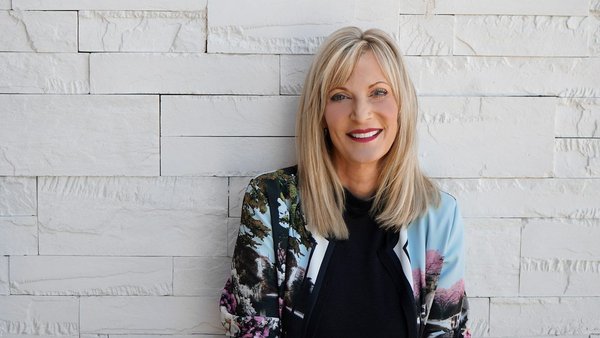Promoted content
The Next Five Years /
Omnicom Media Group’s global head of strategic engagement, Chris Stephenson, shares his lessons for today from the future of media

At Most Contagious, Omnicom Media Group’s global head of strategic engagement, Chris Stephenson, presented the company’s exclusive research — created in partnership with WARC — that showcased projections for how much time people around the world will spend with different media over the next five years.
He told the crowd, who had gathered in London on 7 December to learn about the most important brands and marketing trends of the year: ‘We live in changing times, we live in complicated times. Prediction is hard, projection is hard. We have no map for where we're going in the future. But we can hone our compass, and we’re going to hone a compass to navigate, not just where we're going, but how we get there, as well.’
The research, said Stephenson, was ‘based on audiences, channels, behaviours, commercial investment and effectiveness’, and OMG and WARC took a deliberately broad and macro view, limited by the available tracked data over time. The data that Stephenson presented began in 2013 and included projections all the way up to 2028, and took in social media, linear video (TV), broadcast radio, printed news and magazines, online print, gaming (consoles) and streaming video. (It’s worth noting that console gaming only accounts for roughly a third of all gaming time-spent.)
In 2016, social media overtook linear video, with projections showing that linear video will be overtaken by streamed video in 2025 and by music streaming in 2026. ‘By 2028, digitally served media will account for 78% of all time-spent globally,’ said Stephenson.
After providing a view on the media landscape, Stephenson moved on to outline the parallel story concerning the online tools that the marketing industry uses to track where people are spending their time. The headlines on the topic so far have all been about the deprecation of certain signals, like cookies and the device identifiers used by Apple and Alphabet, but these were wrong, contended Stephenson. The story is not so much one of deprecation as it is one of the diversification, he elaborated.
The expectation is that these new signals are going to be based increasingly around people’s interests and affinities. He added: ‘Those signals are going to exist in a much more evolved, mature digital ecosystem. That’s going to give us a whole lot more flexibility in terms of how we identify and think about audiences.’
Stephenson picked out Reddit, Discord and Twitch as the kinds of platforms that are already connecting with these affinity audiences.
Over the next five years, the digitally-led media landscape will also open up new opportunities around the kinds of assets brands use. For example, said Stephenson, Amazon debuted a new American football event on Black Friday (24 November), exclusively on its Prime subscription service. ‘We saw the creation of a new shopping moment, a retail moment and the human moment. And this idea that, once we reach digital maturity — and we're rapidly approaching digital maturity — you get converged assets, layered assets and streaming media.’
To underscore the point of the creative opportunities of ‘media crashing together’, he highlighted the Phone it In campaign from Skinny, whereby the New Zealand telco used cheeky OOH ads to encourage people to call a number and record a voiceover for a radio ad for the brand. ‘The bigger and broader media is getting, the more converged, the more concentrated, the more layered our assets can be.’
He finished on the topic elevated experiences and the importance of focusing on journey architecture. While there’s a lot of focus in terms of investing in things that can automate and speed up and scale marketing, such as generative AI origination, decision science and creative engineering), marketers really need to ‘understand in this digitally mature experience ecosystem exactly where we want to be, who we want to engage, and how we want to engage with a huge precision focus in the next five years’.
Stephenson concluded: ‘I haven't got a map, but I hope we've been able to hone our compass just a little bit. I’m excited about where we’re going to go, and I’m excited about what we could do together.’
Want more of the same? /
We don’t just write about best-in-class campaigns, interviews and trends. Our Members also receive access to briefings, online training, webinars, live events and much more.




